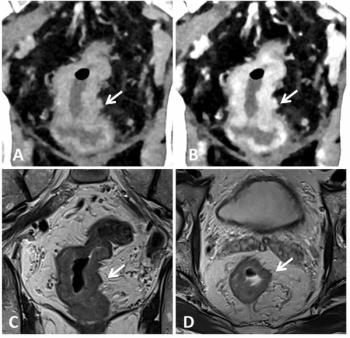
Hitachi offers high-field open
Hitachi Medical Systems formally launched its 1.2T vertical field open MR scanner at the RSNA meeting. Oasis, shown as a work-in-progress at last year’s meeting, cleared the FDA in September.
Hitachi Medical Systems formally launched its 1.2T vertical field open MR scanner at the RSNA meeting. Oasis, shown as a work-in-progress at last year's meeting, cleared the FDA in September. Built around a gradient system with 33 mT/m amplitude and 100 T/m/sec slew rate, the scanner features Zenith RF coils. These coils are the culmination of 20 years' experience in the development of vertical field MR, according to Hitachi. Field uniformity is driven by the company's proprietary Higher-Order Active Shim Technology, which is designed to ensure fat saturation over the scanner's large field-of-view. Oasis also features Hitachi's RAPID parallel imaging, TRAQ time-resolved MR angiography, and RADAR patient-motion compensating technology.
Hitachi is also unveiling a new pulse sequence for the cylindrical 1.5T Echelon scanner. The TIGRE sequence supports dynamic abdominal and bilateral breast studies at high temporal and spatial resolution.
Newsletter
Stay at the forefront of radiology with the Diagnostic Imaging newsletter, delivering the latest news, clinical insights, and imaging advancements for today’s radiologists.



























